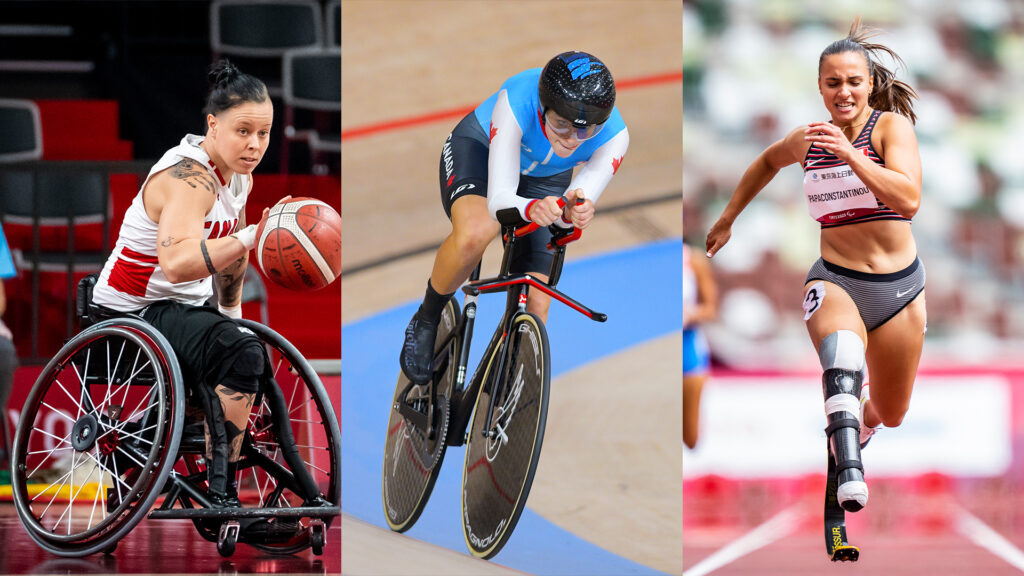WHAT IS CLASSIFICATION?
Classification is the system that “determines which athletes are eligible to compete in a sport and how athletes are grouped together for competition. This, to a certain extent, is similar to grouping athletes by age, gender or weight” (International Paralympic Committee).
The classification system has been designed so that athletes who succeed in competition do so on the basis of their sporting ability including their technical skill, fitness, mental focus, and tactical ability. Athletes are classified according to their activity limitation resulting from their disability which is termed “impairment” in the context of classification.
In our Sports section, find a breakdown on the classification for each Paralympic sport.
As part of its commitment to improving the understanding of Classification within the Paralympic Movement, the IPC also provides a free, open access online course called Classification Fundamentals. Learn more and take the course.

More details on Classification
Athletes go through an evaluation that groups them into their “sport class,” according to their physical, intellectual, or sensorial function, in a sport. These include standardized tests performed by the athlete and assessed by a classification panel. Athletes will undergo physical, psychological, or visual examinations depending on the nature of their impairment. The classification evaluation may also include a technical assessment, and observation on the field of play. Different sports require different activities and movements, so classification is sport-specific. An athlete who is eligible to compete in one sport may not be eligible in another. Once classified, athletes in the same sport class compete against each other.
Wherever possible, an athlete’s classification status is confirmed before arriving at the Paralympic Games. For athletes who have a changing or progressive condition that requires ongoing evaluation to ensure the athletes are in the right class, classification may take place several times over the course of their career, including at the Paralympic Games.
There are 3 main sport class statuses:
New (N) – is assigned to athletes who have been nationally classified, but not yet internationally classified according to the sport rules.
Review (R) – is assigned to athletes who have been internationally classified according to the relevant sport rules, but are subject to review. Review status may be assigned to an athlete due to a fluctuating or progressive impairment, or to a young athlete who has not yet reached physical maturation.
Confirmed (C) – is assigned to athletes who have been internationally classified according to the relevant sport rules and the panel is satisfied the athlete’s impairment will remain stable.
Classification for each sport is regulated by the International Sport Federation (ISF) for each sport and must comply with the IPC Classification Code and International Standards. Athletes are classified by an international panel of accredited classifiers trained by the ISFs. Published sport-specific classification criteria are used to guide the assessment of each athlete.
Classifiers are certified officials who qualify through practical and course work.
Typically, a classification panel is made up of two or more classifiers who evaluate each athlete.
The Paralympic Movement offers sport opportunities for athletes that have an impairment that belongs to one of the 10 eligible impairment types:
Impaired muscle power: Reduced force generated by muscles or muscle groups, such as muscles of one limb or the lower half of the body, as caused, for example, by spinal cord injuries, spina bifida or polio.
Impaired passive range of movement: Range of movement in one or more joints is reduced permanently, for example due to arthrogryposis. Hypermobility of joints, joint instability, and acute conditions, such as arthritis, are not considered eligible impairments.
Limb deficiency: Total or partial absence of bones or joints as a consequence of trauma (e.g. car accident), illness (e.g. bone cancer) or congenital limb deficiency (e.g. dysmelia).
Leg length difference: Bone shortening in one leg due to congenital deficiency or trauma.
Short stature: Reduced standing height due to abnormal dimensions of bones of upper and lower limbs or trunk, for example due to achondroplasia or growth hormone dysfunction.
Hypertonia: Abnormal increase in muscle tension and a reduced ability of a muscle to stretch, due to a neurological condition, such as cerebral palsy, brain injury or multiple sclerosis.
Ataxia: Lack of co-ordination of muscle movements due to a neurological condition, such as cerebral palsy, brain injury or multiple sclerosis.
Athetosis: Generally characterised by unbalanced, involuntary movements and a difficulty in maintaining a symmetrical posture, due to a neurological condition, such as cerebral palsy, brain injury or multiple sclerosis.
Visual impairment: Vision is impacted by either an impairment of the eye structure, optical nerves or optical pathways, or the visual cortex.
Intellectual impairment: A limitation in intellectual functioning and adaptive behaviour as expressed in conceptual, social and practical adaptive skills, which originates before the age of 18.